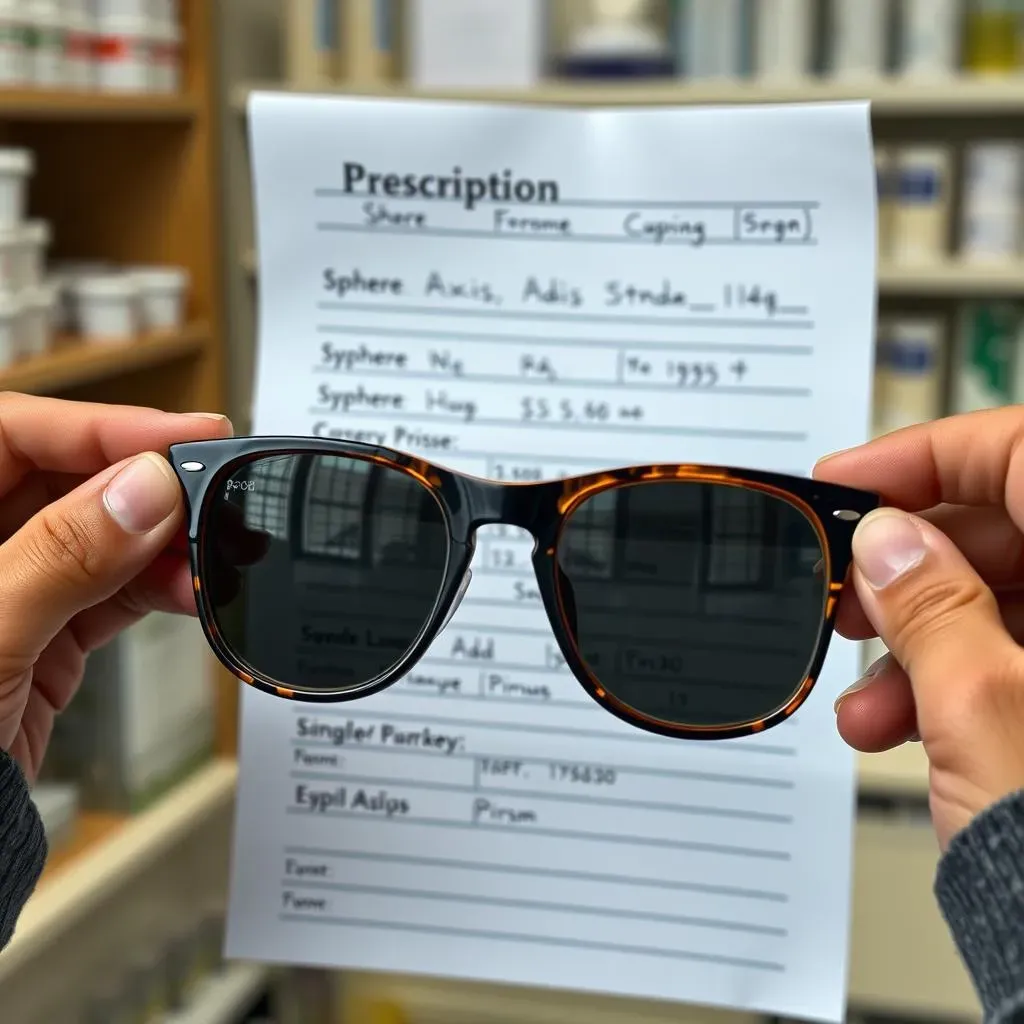Table of Contents
Getting a new pair of sunglasses can be an exciting experience, but for those who need prescription lenses, it can also be overwhelming. If you're wondering how to read your prescription for sunglasses, you're not alone. Understanding your prescription is crucial to getting the right lenses and ensuring that your sunglasses provide the correct vision correction. In this article, we'll guide you through the process of how to read your prescription for sunglasses, breaking down the components and explaining what each part means. By the end of this article, you'll be able to confidently read your prescription and choose the perfect pair of sunglasses that meet your vision needs. Whether you're looking for a stylish pair of shades or a functional pair for everyday wear, learning how to read your prescription for sunglasses is the first step to finding the perfect fit. So, let's get started and explore the world of prescription sunglasses together, and discover the simplicity of how to read your prescription for sunglasses.
Understanding Your Prescription for Sunglasses: A Beginner's Guide to How to Read Your Prescription for Sunglasses
Understanding Your Prescription for Sunglasses: A Beginner's Guide to How to Read Your Prescription for Sunglasses
Introduction to Prescription Terminology
When it comes to understanding your prescription for sunglasses, it's essential to familiarize yourself with the terminology used by optometrists and opticians. The prescription will typically include a series of numbers and abbreviations that represent the lens power, cylinder, axis, and other relevant details. For instance, the term "SPH" refers to the spherical power of the lens, while "CYL" indicates the cylindrical power. Understanding these terms is crucial to reading your prescription accurately.
To get started, let's break down the components of a typical prescription. The prescription will usually include the following information: sphere (SPH), cylinder (CYL), axis, and add power. The sphere represents the lens power needed to correct nearsightedness or farsightedness, while the cylinder and axis are used to correct astigmatism.
Term | Description | Example |
|---|---|---|
SPH | Spherical power | -2.50 |
CYL | Cylindrical power | -1.00 |
Axis | Axis of astigmatism | 90 |
Deciphering the Prescription Format
Now that we've covered the basic terminology, let's move on to deciphering the prescription format. A typical prescription will be written in a specific format, with the right eye (OD) listed first, followed by the left eye (OS). The prescription will include the sphere, cylinder, axis, and add power for each eye. For example, a prescription might read: "OD: -2.50 -1.00 x 90, OS: -2.00 -0.50 x 180". This tells us that the right eye has a spherical power of -2.50, a cylindrical power of -1.00, and an axis of 90, while the left eye has a spherical power of -2.00, a cylindrical power of -0.50, and an axis of 180.
As you can see, reading a prescription for sunglasses requires a basic understanding of the terminology and format used. By familiarizing yourself with these concepts, you'll be better equipped to read your prescription and choose the perfect pair of sunglasses to meet your vision needs.
- Understand the terminology used in prescriptions, including SPH, CYL, axis, and add power.
- Familiarize yourself with the prescription format, including the right eye (OD) and left eye (OS) listings.
- Practice reading sample prescriptions to improve your understanding and confidence.
Breaking Down the Components: How to Read Your Prescription for Sunglasses and What Each Part Means
Breaking Down the Components: How to Read Your Prescription for Sunglasses and What Each Part Means
Understanding the Sphere (SPH) Component
The sphere (SPH) component of your prescription represents the lens power needed to correct nearsightedness or farsightedness. A minus (-) sign indicates nearsightedness, while a plus (+) sign indicates farsightedness. For example, a prescription with a SPH of -2.50 means that the lens power needed to correct nearsightedness is 2.50 diopters. It's essential to understand the SPH component to ensure that your sunglasses provide the correct vision correction.
To break it down further, the SPH component can be divided into two parts: the spherical power and the cylindrical power. The spherical power corrects nearsightedness or farsightedness, while the cylindrical power corrects astigmatism. Understanding these components is crucial to reading your prescription accurately and choosing the right sunglasses.
Component | Description | Example |
|---|---|---|
SPH | Spherical power | -2.50 |
CYL | Cylindrical power | -1.00 |
Decoding the Cylinder (CYL) and Axis Components
The cylinder (CYL) component represents the lens power needed to correct astigmatism, while the axis component represents the orientation of the astigmatism. The axis is measured in degrees, with 0-180 degrees indicating the orientation of the astigmatism. For example, a prescription with a CYL of -1.00 and an axis of 90 means that the lens power needed to correct astigmatism is 1.00 diopters, and the astigmatism is oriented at 90 degrees.
Understanding the CYL and axis components is vital to ensuring that your sunglasses provide the correct vision correction. By combining the SPH, CYL, and axis components, you can determine the correct lens power and orientation for your sunglasses.
- SPH: Spherical power
- CYL: Cylindrical power
- Axis: Orientation of astigmatism
Putting it all Together: How to Read Your Prescription for Sunglasses
Now that we've broken down the components of your prescription, let's put it all together. By understanding the SPH, CYL, and axis components, you can read your prescription and choose the perfect pair of sunglasses. Remember to look for the right eye (OD) and left eye (OS) listings, and to combine the SPH, CYL, and axis components to determine the correct lens power and orientation.
By following these steps, you'll be able to confidently read your prescription and choose the perfect pair of sunglasses to meet your vision needs. Whether you're looking for a stylish pair of shades or a functional pair for everyday wear, understanding how to read your prescription for sunglasses is the key to finding the perfect fit.
Applying Your Knowledge: Tips on How to Read Your Prescription for Sunglasses and Choose the Perfect Pair
Applying Your Knowledge: Tips on How to Read Your Prescription for Sunglasses and Choose the Perfect Pair
Choosing the Right Frame Style
Now that you've learned how to read your prescription for sunglasses, it's time to choose the perfect frame style. With so many options available, it can be overwhelming to decide on the right one. However, by considering your face shape, personal style, and lifestyle, you can narrow down your options and find the perfect pair of sunglasses.
For example, if you have a round face, you may want to consider a frame style that is more angular or rectangular. On the other hand, if you have a square face, you may want to consider a frame style that is more curved or circular.
Face Shape | Recommended Frame Style |
|---|---|
Round | Angular or Rectangular |
Square | Curved or Circular |
Oval | Most frame styles |
Considering Lens Options
In addition to choosing the right frame style, you'll also want to consider your lens options. This includes the type of lens material, the level of UV protection, and any special features such as polarized or mirrored lenses. By considering your lifestyle and preferences, you can choose the perfect lens option to meet your needs.
For example, if you spend a lot of time outdoors, you may want to consider a lens with high UV protection. On the other hand, if you're looking for a stylish and fashionable option, you may want to consider a lens with a mirrored or polarized finish.
- Polarized lenses: reduce glare and improve visibility
- Mirrored lenses: add a stylish and fashionable touch
- UV protection: essential for outdoor enthusiasts
Final Tips and Recommendations
Finally, when applying your knowledge to choose the perfect pair of sunglasses, remember to consider your overall style and preferences. Don't be afraid to try on different frame styles and lens options to find the one that works best for you. And, if you're still unsure, don't hesitate to consult with an optician or eye care professional for personalized advice and recommendations.
By following these tips and considering your options carefully, you can find the perfect pair of sunglasses to meet your needs and enhance your style. Remember, your sunglasses are not just a fashion statement, but also an important tool for protecting your eyes and improving your vision.
Conclusion: Mastering the Art of Reading Your Prescription for Sunglasses
In conclusion, learning how to read your prescription for sunglasses is a straightforward process that can be achieved with a little practice and patience. By understanding the different components of your prescription, including the sphere, cylinder, axis, and add power, you can confidently choose the right lenses for your sunglasses. Remember, reading your prescription is not just about deciphering a bunch of numbers and codes, it's about taking control of your vision and ensuring that you get the best possible correction. With this guide, you're now equipped with the knowledge to read your prescription for sunglasses and make informed decisions about your eye care. So, go ahead and find the perfect pair of sunglasses that suits your style and vision needs, and enjoy the clarity and comfort that comes with wearing prescription lenses that are tailored to your unique needs.
